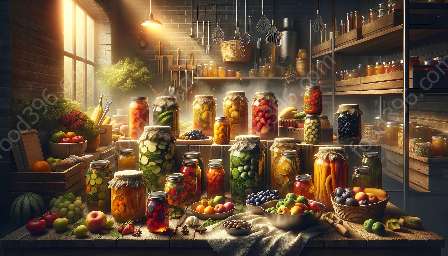Food preservation and processing have been essential practices throughout history, ensuring the availability of food beyond its immediate harvest. Canning, a method of preserving food through heat processing and airtight sealing, has played a crucial role in extending the shelf life of perishable goods.
The Ancient Beginnings
The concept of preserving food in airtight containers dates back to ancient civilizations. The process of canning as we know it today has roots in the early preservation techniques developed by the Greeks and Romans. These early attempts often involved sealing food in containers, such as amphorae, with a combination of heat and wax or resin to create airtight conditions.
The Revolutionary Discovery by Nicolas Appert
The modern history of canning began in the early 19th century with the groundbreaking work of the French confectioner and chef, Nicolas Appert. Appert's experimentation with preserving food in sealed glass jars through heat processing led to his discovery of a method to prolong the shelf life of various food products, including meats, fruits, and vegetables. In 1810, Appert's innovative technique earned him a substantial reward from the French government and laid the foundation for the commercial canning industry.
The Role of Louis Pasteur
The pivotal role of Louis Pasteur in the development of food preservation techniques cannot be overstated. Pasteur's research on microbiology and sterilization techniques had a profound impact on the canning process. By understanding the role of microorganisms in food spoilage, Pasteur's work contributed to the refinement of canning methods and the assurance of food safety.
Industrial Expansion and Innovation
The industrial revolution spurred significant advancements in canning technology, leading to the widespread availability of canned goods. The development of specialized machinery for food processing and canning, such as the invention of the tin can and the continuous sterilization process, revolutionized the industry and expanded the range of food products that could be preserved.
Modernization and Diversification
In the 20th century, canning evolved further with the introduction of novel techniques and materials. The adoption of novel packaging materials, such as aluminium and plastics, expanded the versatility and efficiency of canning processes. Moreover, the emergence of new preservation methods, such as freeze-drying and vacuum sealing, provided additional options for extending the shelf life of perishable goods.
The Contemporary Landscape
Today, canning remains an integral component of the food preservation and processing industry, catering to diverse consumer preferences and global demand. The emphasis on sustainable practices and the development of innovative packaging technologies, including eco-friendly materials and convenient portion sizes, continues to shape the modern landscape of canning.
Conclusion
The history of canning is a testament to human ingenuity and the relentless pursuit of safeguarding food resources. From its humble origins to its modern applications, canning has played a crucial role in sustaining populations, preserving culinary traditions, and addressing food security challenges. As we look to the future, canning will undoubtedly continue to adapt and thrive, embodying a timeless legacy of preservation and nourishment.

